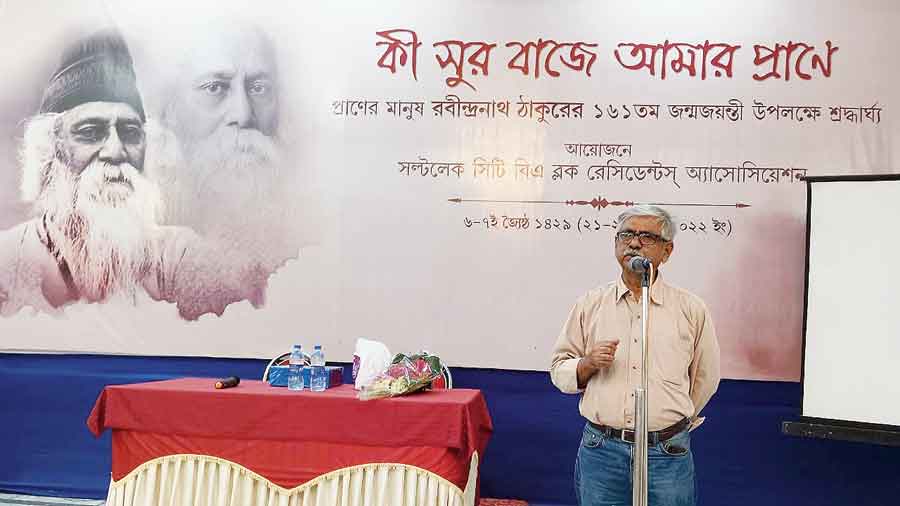Music isn’t the only way to remember Rabindranath Tagore. BA Block recently held a seminar to discuss how Tagore and his works have been used in films and illuminating the audience was Sanjoy Mukhopadhyay, film theorist and professor of film studies, Jadavpur University.
“From the recorded instances and conversations of Tagore, it can be deduced that the bard wasn’t particularly interested in cinema,” said Mukhopadhyay. “Once he had said that cinema is for the entertainment of the common man and should not be compared with literature. In fact, the view was shared by several leading intellectuals of the time, from Maxim Gorky to Marcel Proust.”
In 1917, Prasanta Mahalanobis arranged a projection at Santiniketan of a film clip of a musical presentation by Visva Bharati students edited in the chemistry laboratory of Presidency College. “Tagore left mid-way for a meal and on returning, he complimented the song and dance performances captured in the clip,” Mukhopadhyay said.
“In 1923, his Manbhanjan was made into a movie but we do not know his reaction to it. But he did see another film version of the story in 1930, titled Giribala, directed by Modhu Bose and starring his actress wife Sadhona Bose, in a box seat at a cinema hall,” Mukhopadhyay said.
In 1929, Tagore wrote to Murari Bhaduri, Sisir Bhaduri’s brother, that if cinema had to come of age as an art form it had to be free of the influence of literature. “This is possibly the start of film theory in India.”
The first time Tagore regarded cinema seriously was on the ship on the way back from Italy in 1924-25, when Hollywood productions were shown on the deck. “He noticed the movement of images in the silent films and felt that if the technology developed, cinema could approximate to dance.”
In his later years, he had also seen Chokher Bali in 1938 made by Sotu Sen, said Mukhopadhyay.
He also mentioned how the novella Nashtanir was made into Charulata by Satyajit Ray. “In the first paragraph of Nashtanir, Tagore explained the lifestyle, situation and daily activities of the titular character in a few words but when Ray translated it in film, he added his own vision and showed her lifestyle through various details over seven minutes,” he pointed out.
The audience enjoyed the talk. “This was a great way to remember the poet. He has contributed so much and given us so many avenues to explore him,” said Atanu Halder. “I hope our committee organises more such discussions in future,” said Rina Dey, another block resident.
President of the BA Block residents’ body Arunava Das said the aim of the event was to present something different. “This was a vast topic to discuss and we were honoured to have such an eminent speaker amongst us,” he said.
Block residents had also celebrated Rabindrajayanti through music, dance and recitation on another evening.
